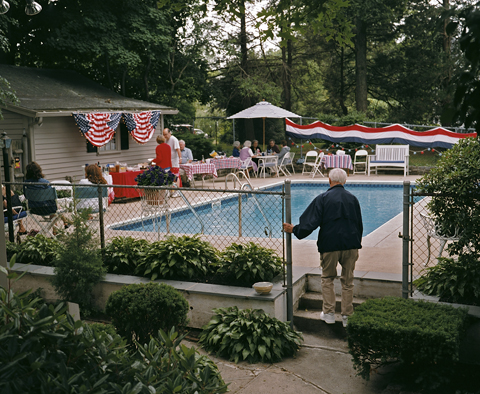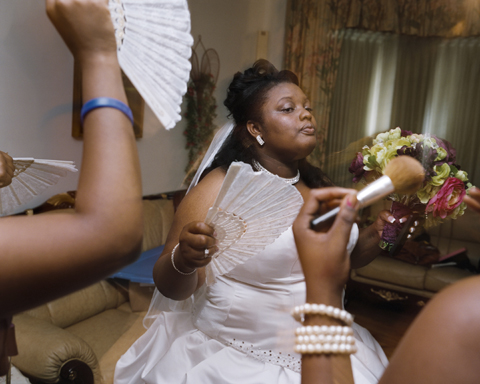
AIN’T THAT AMERICA Fourth of July. |
In 2004, Providence photographer Mary Beth Meehan returned to her hometown of Brockton, Massachusetts, seeking to better understand the major racial and economic shifts it had seen over the past generation. She'd left the struggling factory town for college in 1985, one of the 80 percent of residents then who were white. By the 2000s, new waves of immigration — from Haiti, Cape Verde, Latin America — had turned the city majority-minority.
Returning over the years to visit her parents, who still reside there, Meehan was struck by "how people talked about the place and what a dump it had turned into." She says, "I started photographing to just deal with all the changes and the anger and regret . . . trying to use photography to figure it out."
Twelve photos from her City of Champions series are included in "Site Specific," a three-person show (with Alexandra Broches and Giacomo Fortunato ) at the Wheeler School's Chazan Gallery (228 Angell St, Providence, through December 5). The title references the nickname the city acquired because of its native son boxing legends Rocky Marciano and Marvin Hagler. But, of course, it's also an ironic comment on a city that can feel on the ropes.

FRIDAY NIGHT LIGHTS Meehan’s High School Band. |
In one photo, a black woman, neatly attired in an orange coat, poses in front of a weedy vacant lot on her way home from work. In another, Meehan's white-haired grandmother, dressed in a pink polkadot vest, leans against the doorframe of her Edwardian kitchen talking on a phone. Elsewhere, a black immigrant from Guinea-Bissau curls under a cheap fleece blanket printed with the American flag. A fourth photo depicts a white woman standing in an autumn yard holding a black toddler in her arms.
Meehan's Brockton is a microcosm for changing economics and demographics that are happening all over America. A hundred years ago, Brockton's shoe factories had provided work to immigrants fresh off boats from Europe and a route into the middle class. But over the past few generations, the factories have closed and the once-vibrant downtown shopping district has become empty storefronts. Public housing built in the city center during the 1970s and '80s adds to the impoverished air. And the descendents of those Irish, Italian, and Portuguese immigrants of a century before, bruised by all this loss, have blamed the newcomers.
"What really got me going is how people talked about it. My older white relatives were very angry," Meehan says. They complained that the city had turned into a "third world country." She adds, "In those 25 years, it had changed so much. It was about race and economics and class."

READY FOR HER CLOSE-UP Meehan’s Ludgy’s Wedding Day. |
Meehan's photos are handsome and ambiguous, leaning more toward fine art than documentary. What is the relationship between the white woman and the black boy she holds? (Meehan tells me it's an old Brockton friend who adopted the baby from Ethiopia. "It was one of the few places where I'd seen any racial interweaving," she says.) Who is the young black woman photographed with a four cigars tucked into the waist of her jeans and a bandana holding back her hair? In community forums that Meehan has held to discuss her project in Brockton, people have often guessed the woman to be a pothead and/or a gang member. The photo doesn't really provide much evidence either way.